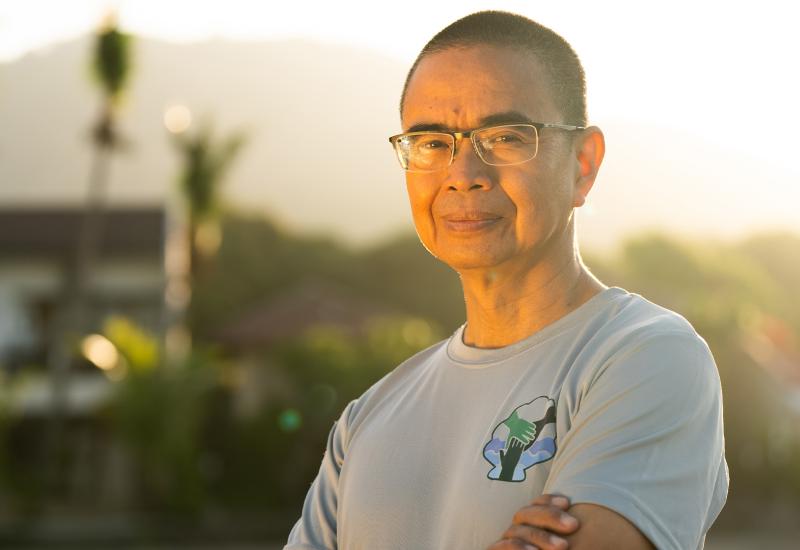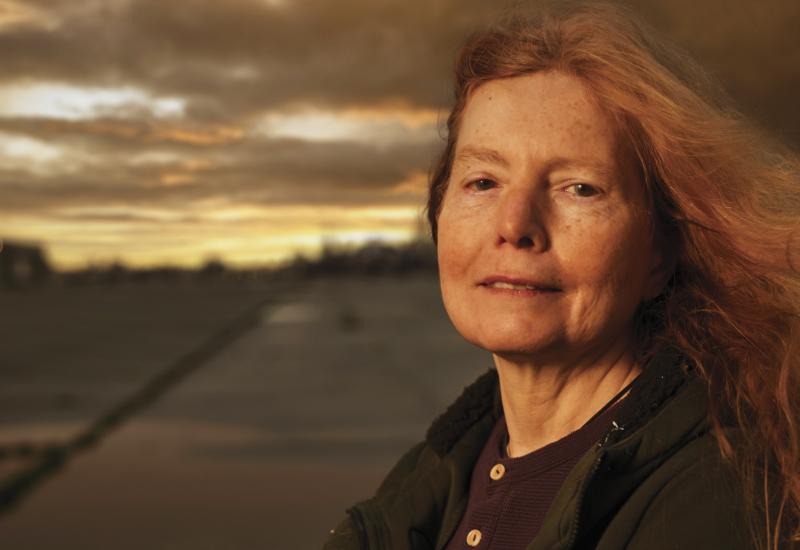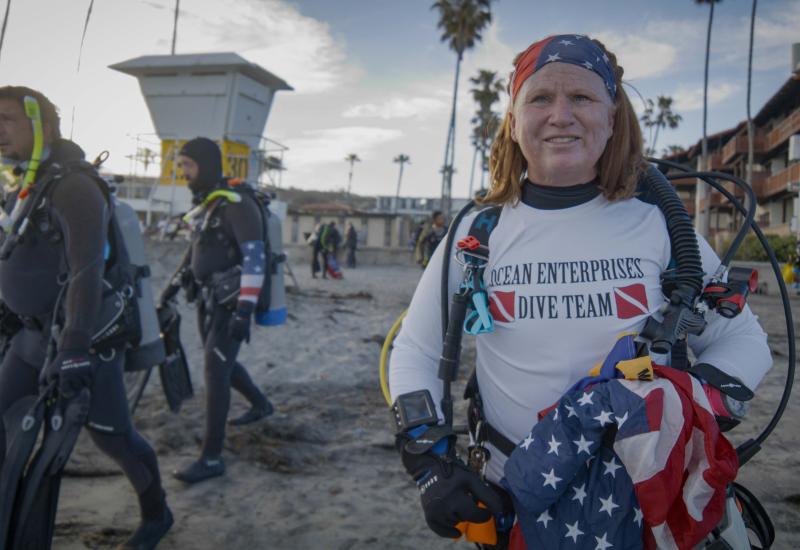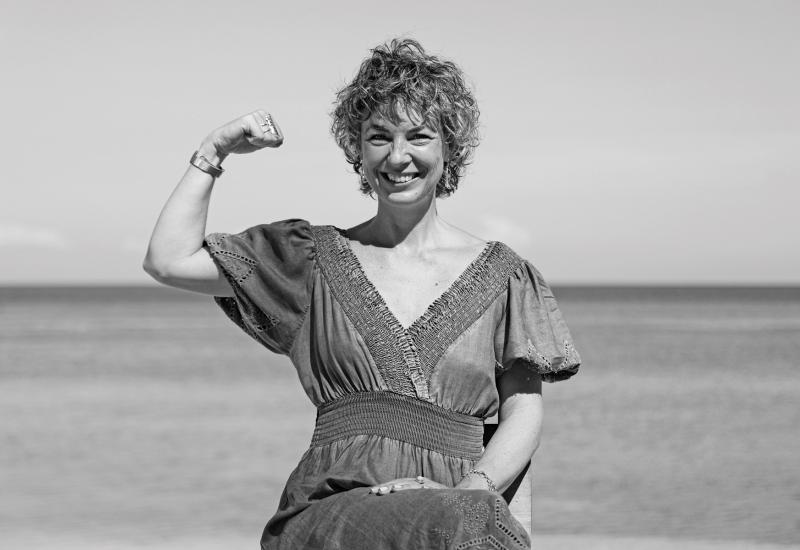Andrew and Marit Miners Honored as Scuba Diving Sea Heroes for Work On Misool
“We felt strongly that when we built Misool and formed the Misool Marine Reserve, we were entering a community and making our home there,” says Andrew Miners, who along with his wife, Marit, is co-founder of a resort and foundation often held up as an example of how everyday people with grit, heart and determination can effect real change. For their vision and dedication, the Miners are our January/February Sea Heroes.
ANDREW
YEAR CERTIFIED: 1989
AGE WHEN CERTIFIED: 19
CERTIFICATION LEVEL: Instructor
MARIT
YEAR CERTIFIED: 2000
AGE WHEN CERTIFIED: 23
CERTIFICATION LEVEL: Advanced Open Water
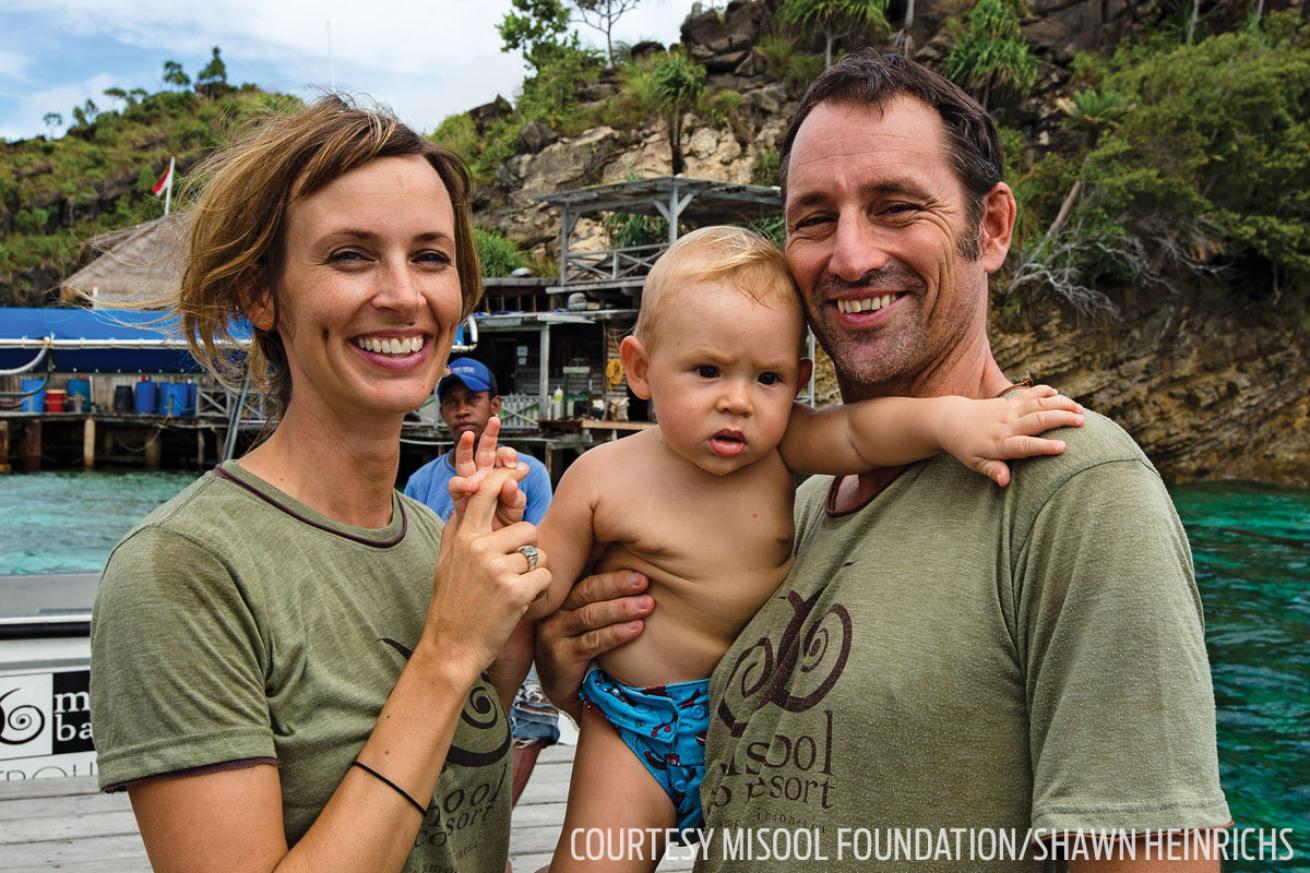
Courtesy Misool Foundation/Shawn HeinrichsMarit and Andrew Miners with their son.
Q: MISOOL WAS RECENTLY NAMED A MISSION BLUE “HOPE SPOT.” WHAT DOES THAT MEAN FOR YOU?
MM: We’re really excited! Mission Blue is uniting a global coalition to inspire an upwelling of public awareness and support for a worldwide network of marine protected areas, including ours. Establishing our 300,000-acre Misool Marine Reserve as a Hope Spot elevates our visibility in the global arena. We hope Misool may serve as an example to other businesses looking for ways to weave together conservation, community and ethical business practices for a sustainable future.
AM: When I first dived in Misool — after years of exploring Indonesia’s reefs on my own boat and discovering reefs both spectacular and bombed-out — I was struck by an unshakable certainty that Misool had to be protected. Something this special just cannot be allowed to go the way that so many other reefs have. We desperately need to protect and nourish areas like these for so many reasons, not least to remind ourselves of how the oceans should be and to give hope that one day we can reverse humanity’s destructive trend and bring nature back into balance.
It’s a real honor to be named a Mission Blue Hope Spot. Our hope is that shining the light on what we have created here shows others what can be done in their own areas, and that our model can be replicated again and again. Just imagine if every resort, hotel and dive shop protected a bit of reef just off their shore. The effects would be immense, and millions of miles of coastal reefs would be protected.
Q: WHAT ARE THE CHALLENGES AND BENEFITS OF WORKING WITH LOCALS?
AM: There could be no Misool Marine Reserve without engaging with the local stakeholders. Too many reserves are legislated by a central government without properly involving local communities and other resource users. This leads to strings of “paper parks” either without proper enforcement or with so little local buy-in that they never really work.
One reason it’s often done like this is that the local stakeholders are often a diverse bunch of folks with different needs and desires, and it’s very time consuming and often difficult to get everybody on board. We felt strongly that when we built Misool and formed the Misool Marine Reserve, we were entering a community and making our home there. Being a good neighbor means listening to what your fellow neighbors are saying and valuing their opinions and concerns. Most people would consider the opinion of the governor of an area as more important than that of a small local fisherman in his dug-out canoe. We don’t. After all, it will be the local angler who will fish in the protected area day in and day out if we don’t get him on board!
There are always challenges, and they come from all directions! I think the main takeaway is that an operation like the Misool Marine Reserve is a living, breathing animal, and we have to continually adapt to the current situation. No matter how you set it up, it will be fruitless if you just set it up, say “OK, that’s done ,” and walk away expecting it to stay protected. It’s a constant commitment.
MM: The local people are our long-term partners. Every business decision is considered from multiple angles, including from the perspective of the community. Being a good neighbor is key to the long-term sustainability of our enterprise. Between our business and our foundation, we employ 165 people, and most of those are locals. That’s 165 people who are supporting themselves and often extended families in a sustainable manner that’s entirely decoupled from the extraction of diminishing resources.
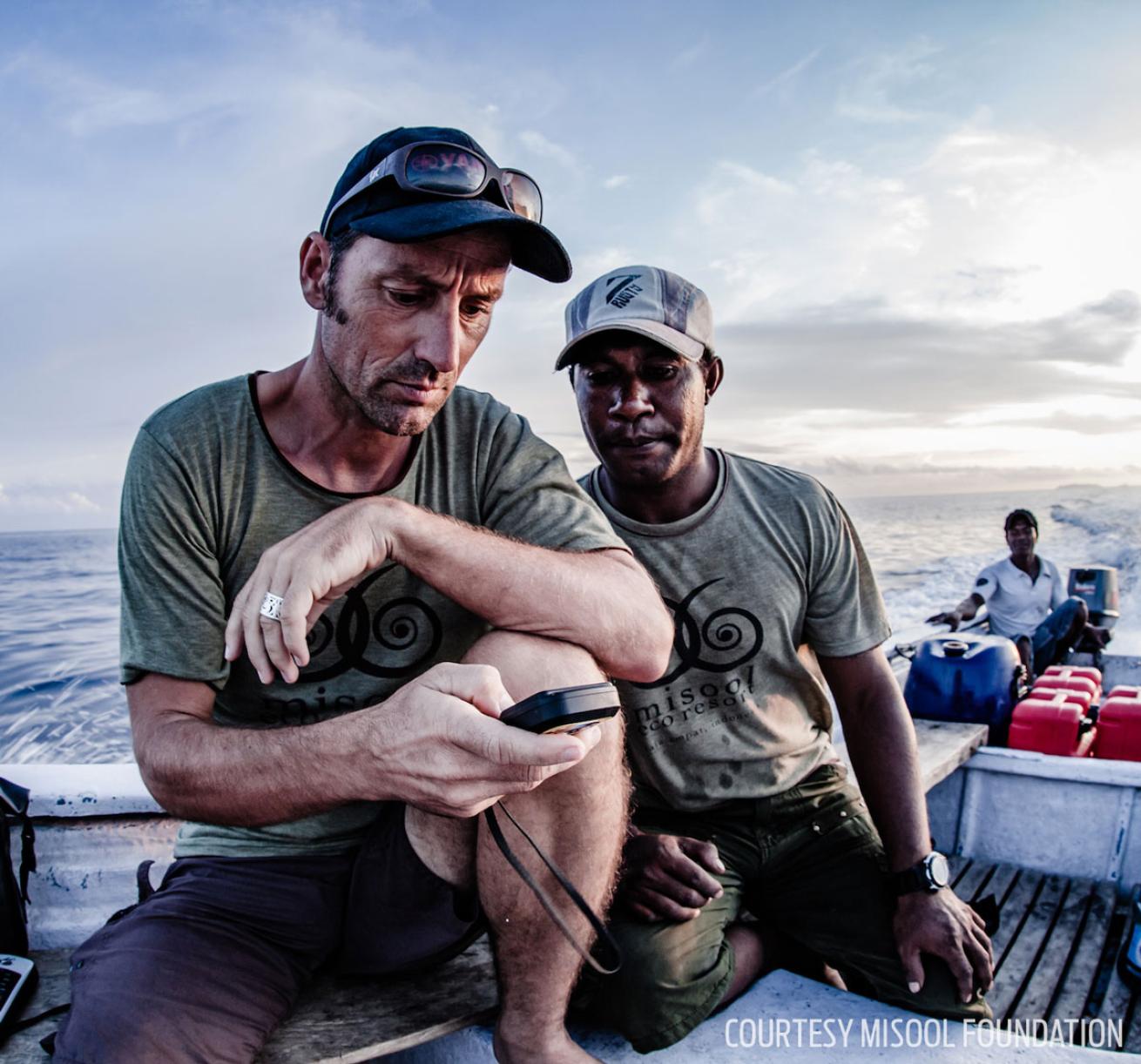
Courtesy Misool FoundationAndrew Miners on patrol at Misool
Q: ANY SURPRISES?
MM: I think what’s surprised me the most is how quickly nature has rebounded. We created the Misool Marine Reserve in 2005, and the recovery has been astonishing. Fish biomass increased on average of 250 percent over a six-year period, and the number of sharks inside our no-take zone is 25 times higher than just outside. Anecdotal reports from divers confirm that the conditions continue to improve year-over-year. Similarly, anecdotal reports from local fishermen just outside the Misool Marine Reserve confirm higher catch rates.
Q: WHAT ARE THE MOST IMPORTANT ISSUES IN MARINE CONSERVATION?
AM: There are so many, it’s hard to pick. I think it’s mainly that most folks still haven’t realized how critical it is for us to protect the oceans, how rapidly they are degrading and how without them, we cannot survive. Global warming and plastic in the oceans are the two that concern me the most, as they are everywhere and affect everything. If we don’t solve both of those issues, ecosystems will collapse and oceans will change so dramatically that most species will die — including our own.
MM: We humans have so many issues vying for our attention, and frankly all of them are important. Marine conservation needs to be approached from all sides to address the very real threats of climate change, ocean acidification, overfishing, food security, pollution, microplastics, unrestricted coastal development, etc. But marine conservation is an especially tricky issue, since a lot of it happens beneath the surface and therefore is beyond most people’s personal experience. It also doesn’t help that sharks don’t have the same cuddle-appeal as pandas or tigers. The trick is translating these issues into something tangible and real. And that is why responsible tourism plays such a vital role in conservation. People protect what they love, and diving introduces people to so many more things to love.
Q: WHAT’S BEEN YOUR MOST SATISFYING MOMENT?
AM: There are many, and often they are the “small things” rather than achieving big goals. When we first started Misool, sighting sharks on a dive was a rare occurrence. Now they are everywhere. Seeing some good-sized grey reef sharks on a dive is always hugely satisfying, as I am reminded of the first day I stepped on Misool’s resort island and saw the finned carcasses of sharks lying on the beach, discarded from a recently abandoned shark finning camp.
Each time I spot a fish species I have never seen before, or see a large school of Spanish mackerel, or a guest comes back from a dive after encountering a giant hammerhead, I am reminded of the beauty of Misool; that it is not one habitat standing still, but that the protection is allowing the regeneration of an incredible ecosystem, and that its untouched state must have been staggeringly bountiful. Each year we move closer to that, and each year I find myself wondering: “Can it really get any better than this?!”
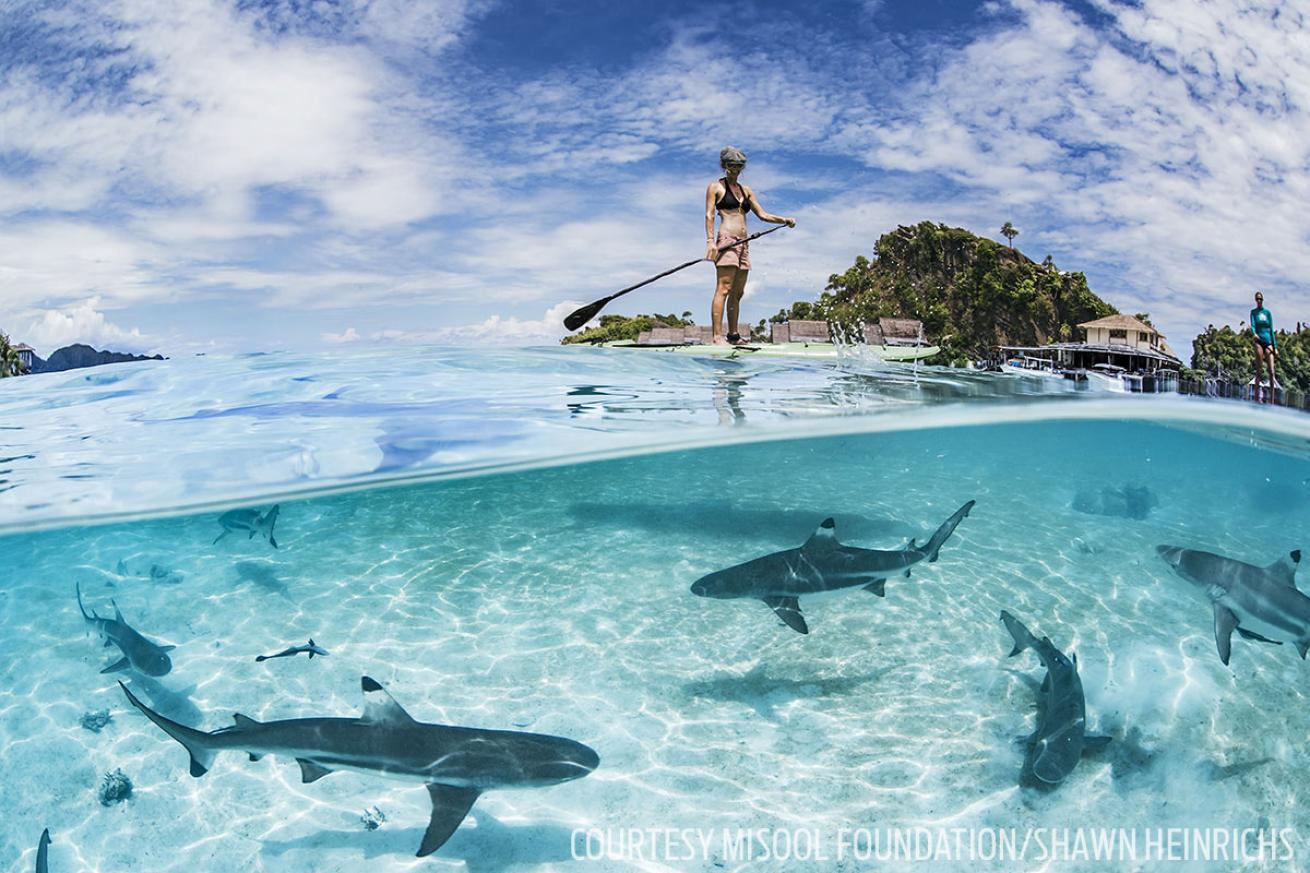
Courtesy Misool Foundation/Shawn HeinrichsMisool was founded on an island once used as a camp for shark finning.
MM: Our son’s first two-word phrase was “baby shark.” We were standing on the jetty at the resort, watching the now-commonplace spectacle of blacktip pups circling in the shallows of the North Lagoon.
I was struck by what a massive transformation had taken place in such a short time: from shark finning camp to baby shark nursery in just a few years. It was profoundly gratifying to realize that we had successfully reset the baseline; my boy experienced this profusion of sharks as totally normal. Nature wins when we just get out of the way.
Q: TELL US ABOUT MISOOL FOUNDATION.
AM: Misool and Misool Foundation’s primary goal is to prove that a dive resort’s active engagement in marine conservation is a huge win for the business, ecosystem and local communities, which we have done. Now we are working on inspiring and assisting other resorts and dive shops to adopt our model and shift the way they look at marine conservation from something that others do to something that everyone does.
MM: Misool Foundation’s mission is to protect the world’s richest reefs. The project was born out of a desperate sense of urgency — south Raja Ampat’s marine ecosystem was on the brink of collapse in 2005. When we first visited the island where our resort now stands, the place was a shark-finning camp. Itinerant fisherman were cutting fins from live sharks to support the shark-fin trade in China and Southeast Asia. All 14 species of shark targeted for the shark-fin trade are critically endangered. Every night on the southern horizon, there were longliners fishing illegally, catching more in a few hours than a village of traditional fishers could take in a whole year.
In order to stop these destructive fishing practices, we planned to build a research and conservation center. Unfortunately, we had A) no experience or education in conservation, architecture, construction or small island politics, and B) no money for what quickly ballooned into a much bigger project than we had anticipated. What we did have was enthusiasm and energy, and we managed to mobilize co-conspirators and investors who also believed in our vision. Together, we created a private-island resort that leverages pristine reefs as its central asset. Ultimately, the resort would become the funding vehicle for the conservation work that urgently needed to be done.
We started work on the project in 2005 when we leased our resort island as well as 300,000 acres of surrounding sea to create a network of no-take zones called the Misool Marine Reserve. But Misool Foundation wasn’t officially established until six years later. Those first years were pretty rough going, as the resort bankrolled 100 percent of our conservation initiatives. There were times we had to choose between buying mangos for our guests’ breakfast or buying fuel to send out our Ranger Patrol. Since registering as a charity, we’ve been able to partner with some great allies like WildAid, The Nature Conservancy, and Conservation International. That’s allowed us to expand our projects considerably.
We now operate a full-time, 15-person Ranger Patrol team to protect the Misool Marine Reserve, using drone and radar surveillance as well as routine patrols in cooperation with Marine Police. We have established a community recycling program that intercepts and recycles 2 tons of ocean-bound plastics per day. We’ve built a kindergarten in a local village and created the Misool Manta Project, which collects important population data on reef and oceanic mantas. We’ve just been given a grant by the Raja Ampat government to start two cooperatives in the local village. One will employ 32 former fishermen in an aquaculture project, and the other will support women processing raw coconut oil into export-quality soap.
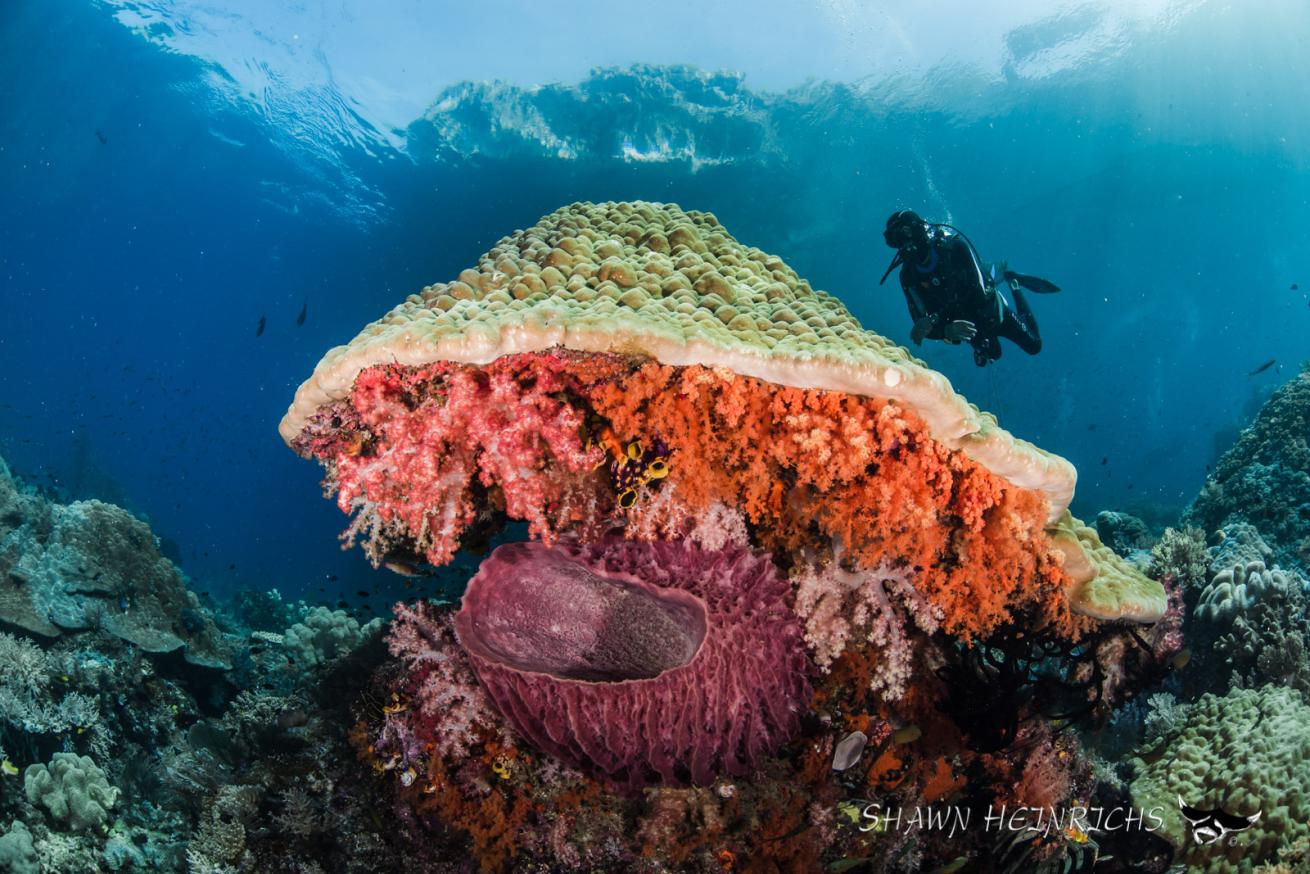
Courtesy Misool Foundation/Shawn HeinrichsMisool Foundation’s mission is to protect the world’s richest reefs.
Q: WHAT’S NEXT FOR MISOOL?
MM: Our mission always will be to protect the world’s richest reefs. I think we have demonstrated that conservation and private enterprise are mutually beneficial, and that nature is our most valuable asset. Conservation, engagement with local communities, and fair labor practices must be central to the business — not afterthoughts. We hope Misool is an inspiring example of just how effective private-enterprise-led conservation work can be. And, of course, how powerful consumer choice can be in supporting conservation.
Next for Misool is to establish this formula as a replicable one, which could be implemented in a diverse range of environments. Of course, Misool’s model isn’t a “one size fits all” design, but the principle is certainly scalable and replicable.
The unique partnership of a for-profit organization, Misool, and its nonprofit sister, Misool Foundation, makes investments in the protection of its central asset possible. The synergy between the two organizations provides the mechanism for guests to visit this rare sanctuary, thus inspiring them to support the conservation initiatives through the foundation. The resort provides a permanent logistics base for the foundation, shares costs, provides support in the form of a senior management advisory team, fundraising, technical expertise, and more. The Foundation would be unable to bear the cost of these services without the resort. And Misool would be unable to offer guests transformative experiences in the heart of marine biodiversity without Misool Foundation’s unfaltering vigilance.
AM: One project that is rapidly growing in its scope and success is our rubbish recycling program. Since starting three years ago, we have recycled more than 700 tons of ocean-bound plastic and currently process about 2 tons per day. Indonesia is the world’s second-worst culprit for putting plastic in the ocean, and the problem is huge. Based on current rates, there will be, by weight, more plastic in the ocean than fish by 2050. The good news is, our program is scalable and can be replicated all throughout Indonesia. We are working with our supporters, the government and local communities to ensure the seas of Raja Ampat and beyond remain clear of trash.
Q: HAVE ANYTHING ELSE TO SHARE?
AM: Marit and I are only a small part of the Sea Heroes of Misool Foundation. We may be the ones most visible, but we stand on the shoulders of so many other Sea Heroes: our team, the local community and all those who support us and see themselves as guardians of this special place.
MM: Once upon a time, when we first set foot on this island, we were just a handful of people with a lot of passion who followed our hearts. Even if we’ve done nothing else, hopefully we have proven that even regular people can do something worthwhile, and something that will be of value for generations to come.
Each Sea Hero featured in Scuba Diving receives a Seiko Prospex PADI Special Edition SRPA21 watch worth $525. In March 2018, judges will select the Sea Hero of the Year, who will receive a $5,000 cash award from Seiko to further his or her work.

